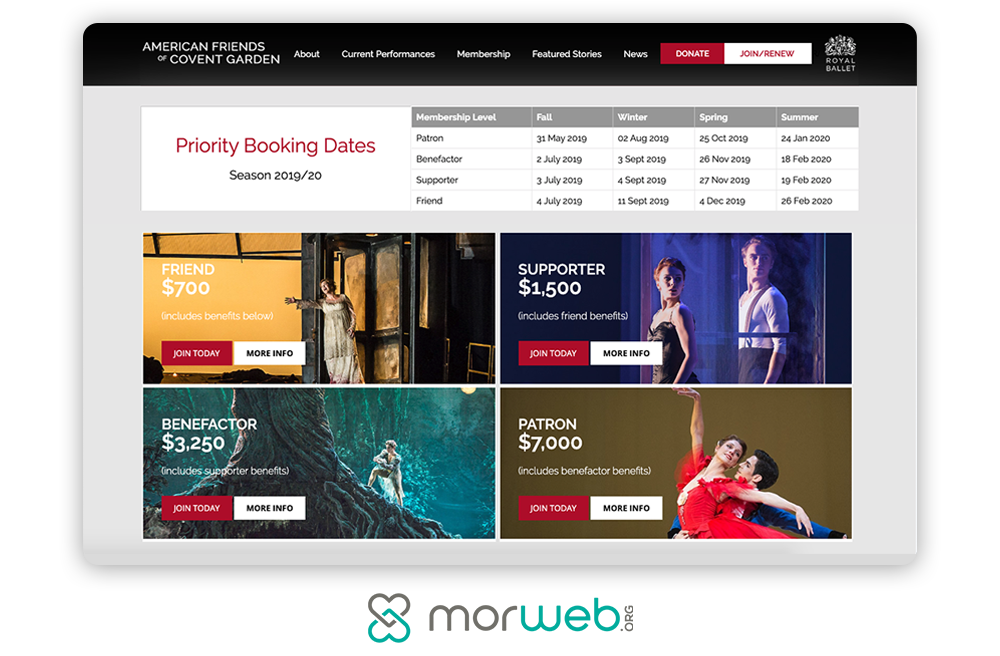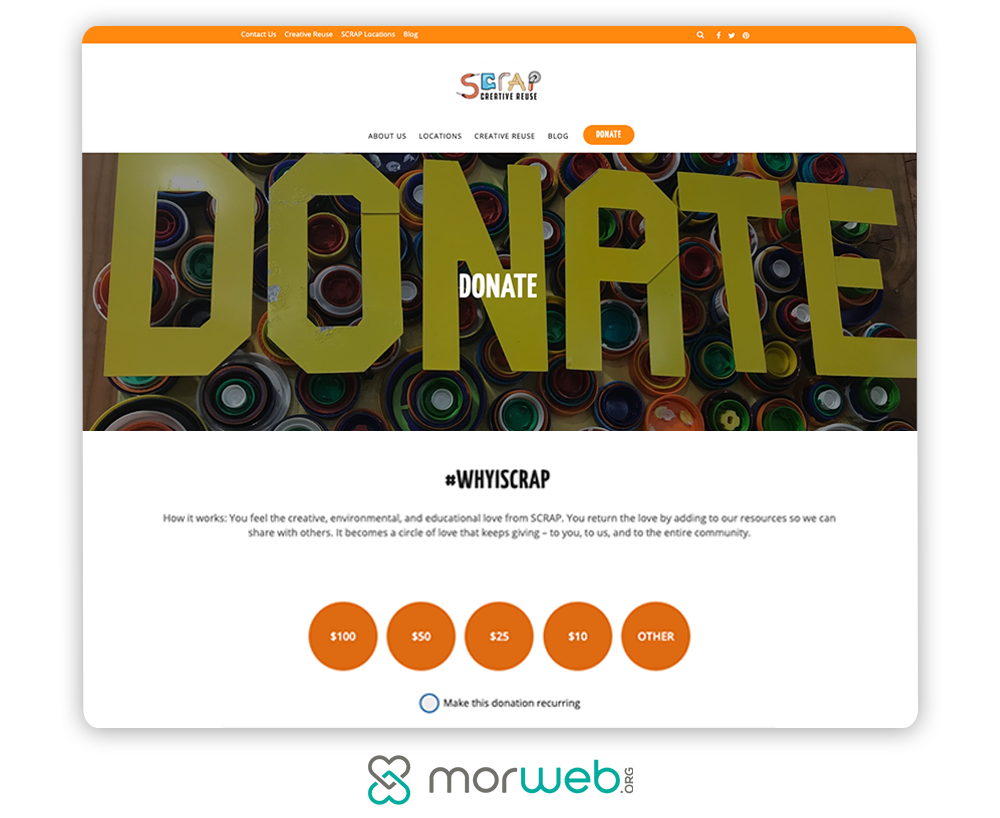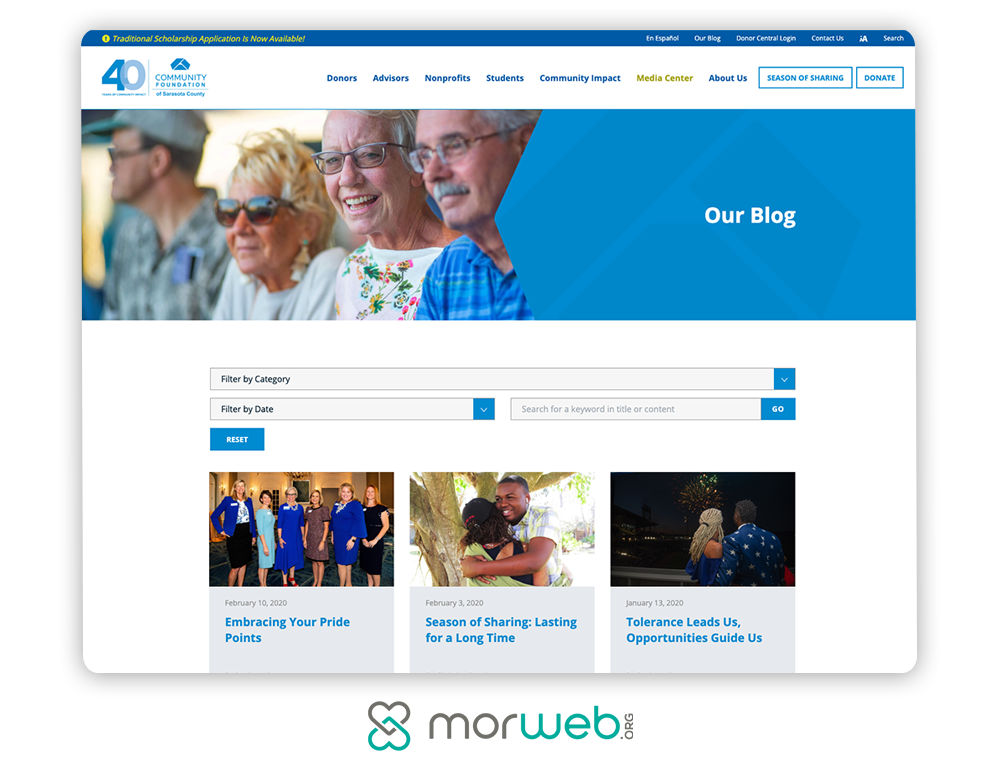
In today’s crowded online market, you need more than a generic website for your association. Whether you’re aiming to grow memberships or encourage deeper engagement among existing members, you’re sure to benefit from rethinking your online presence based on current trends.
The key to an effective association website is actively promoting awareness to attract members and drive event registration. To accomplish this, you need to be proactive in creating a user-friendly experience that serves site visitors with the information they want and need most.
An effective website looks different for every association, which can make it difficult to choose the right design to convey your mission in a way that captures attention. To help, there are easily customizable templates that meet the differing needs of every association. There are quite a few pages every association should consider during the design process, such as:
- Membership Information
- Events Page
- Donation Page
- Discussion Forum
- Blog
With each webpage, prioritize straightforward navigation as well as mobile responsiveness. Each visitor should be able to quickly find exactly what they need, no matter what device they are using. To gain a better sense of how to do this, explore Morweb’s list of best-designed websites. You’ll see a well-designed association website in action, and it may spark some inspiration for your own.
Ready to reach new heights with your association’s website? Let’s get started!
1. Membership Information

Members are the lifeblood of associations, so make them your top priority by featuring your membership program. Create a section where you tell visitors how and why they should join. Explain the different types of memberships you offer (e.g. individual, group, etc.) and provide direct access to your application.
Upon joining, members should be able to quickly and easily access your member portal, where they can pay dues and access member-specific resources. Your portal should do the following:
- remind members about upcoming events;
- send automated notifications about membership renewal; and,
- allow members to update their payment information and communication preferences.
With your content management system (CMS), make sure you can add, edit, and categorize members into a membership directory. With interactive mapping capabilities, members can easily search for others and connect with them, taking their engagement to the next level.
Keep in mind that attracting and keeping association members should be your website’s main goal. To simplify the process, invest in professional membership website builder tools built specifically for associations. Otherwise, you may overlook vital features that members will find useful.
2. Events Page
Uniting members certainly requires a lot of digital work, but physically bringing everyone together is just as essential. To encourage involvement, you’ll need to host regular get-togethers. Conferences, conventions, and fundraisers are an excellent way to connect and interact with members. As such, you need to create a dedicated page that showcases these involvement opportunities.
Through your event page, spread the word to supporters using the following best practices:
- Feature an up-to-date calendar. Your calendar should list each and every one of your events, including details on what, when, and where each is. As soon as your event dates are finalized, add them to your calendar so your members can get excited to participate.
- Include registration forms. Create and share registration forms that capture important information, including names and contact information. This way, you can accurately predict attendance and properly plan for your event.
- Privatize members-only events. When hosting events that are only for members, you’ll need to privatize the page so that others aren’t able to access and register for it. To do this, ensure your CMS allows you to manage user permissions for each web page.
In order for your events to be successful, you need to take the time to promote them. Otherwise, no one will know about the opportunity to get further involved. Making it easier for members and guests to access information about your events vastly increases the chance that they’ll attend. By creating dedicated event pages on your site, you’ll spread the word and spark community interest in no time.
3. Donation Page

For associations, one of the greatest sources of non-dues revenue is donations. As such, you’ll need to develop a well-designed donation page and grow your donor base.
As with any page on your website, brand it to your organization and ensure smooth navigation. This is only a start, though. Here are a few best practices to keep in mind when creating your donation page:
- Prioritize mobile responsiveness. Around 25% of online donations come from mobile devices. Because of this, your donation page should adjust to fit any screen size, making it accessible to everyone. Simplify this process with a CMS that offers automatic mobile responsiveness.
- Fit your form onto one page. Don’t clutter up your donation page. Instead, invite prospects to complete the donation process by condensing your appeal. Limit the number of images and required fields so that donors stay focused on submitting their gifts.
- Include multiple giving options. Maximize funds by offering several ways to donate. For instance, feature a recurring donation option to secure a steady stream of funds. Also, include suggested giving amounts to give donors a frame of reference when deciding how much to give.
- Highlight your donation page in your navigation menu. This ensures users can easily access your donation page from anywhere on your site. Whenever they feel compelled to give, all it should take is one click to reach your donation form.
When designing your giving page, edit from the front end of your site rather than hopping between back-end and preview views. This way, you can easily improve your design as you go. For more tips on creating the best possible donation page, visit this design guide.
4. Discussion Forum
Creating online communities should be a major priority for your association, no matter its size. To start an ongoing conversation, build a discussion forum. By adding this to your website, you’ll enable members to discuss recent events, industry trends, and their personal experiences. Plus, your team will have an accessible outlet for quickly announcing updates and answering member questions.
When creating a strategy for your discussion forum, try the following to build a strong online community:
- Actively promote your forum. Don’t assume that members will stumble upon your forum. You’ll need to spread the word about it. Start by featuring it in your navigation menu on your site as well as on your blog. Then, promote it across your communications.
- Monitor discussions. Someone should monitor the forum to remove inappropriate messages and make sure everything is running smoothly. Try designating a board member or having a group act as community moderators to start conversations and monitor discussions.
- Interact with members. Consider starting a conversation with forum members by asking for their opinions on your programs and events. When you receive insightful feedback, incorporate it in your planning or decision-making. Members will appreciate knowing their voices are heard.
Restrict access to your forum so that only members can use it. This is a great way to incentivize joining. With the right CMS, you can easily do this by creating private pages and managing user access. When you open the door for conversations with members, you should see a boost in member satisfaction and retention. Soon enough, the word will spread about the positive culture your association has instilled.
By encouraging conversation among members, you’ll foster a stronger culture of engagement and provide irreplaceable value.
5. Blog

Fuel your association’s growth by putting industry knowledge at readers’ fingertips. The simplest way to do this is to feature a blog with helpful resources. For your association, blogs work as an extra source of marketable content so you can easily spread the word about your mission.
Use your resources page as a free content source for members and other supporters to read up on topics that matter to them. Whether you’re featuring industry knowledge or monthly updates on your association, ensure it’s content worth reading. You’ll bring in more members and keep them involved by creating high-value posts.
Using your CMS, craft posts directly on your website. Make sure your blog is easy to find and designed similarly to the rest of your website. When designing and updating your association’s blog, implement these suggestions to create valuable posts:
- Drive traffic using calls-to-action. CTAs allow you to funnel users directly to high-value content, such as upcoming events and donation opportunities. When prospects feel motivated by your post, CTAs tell them exactly what their next steps are.
- Enable social media sharing. When readers enjoy your content, they’ll want to share it with their friends and families. Make sure they can do this and spread the word about your association with social media share buttons.
- Feature engaging imagery. Visuals will benefit your posts as they evoke emotion and encourage action. However, don’t overload your posts with graphics as this will distract the reader and slow down the page.
- Use SEO tools. Make your website and posts easier to find in search engines. To do this, leverage a CMS that enables custom meta titles, meta descriptions, and customizable URLs that target keywords you want your association to rank for.
Creating and keeping up with a blog can be a lot of work. Go into it with a positive mindset, and aim to provide readers with content they will find interesting and useful. By continually posting quality updates, you’ll develop a strong following as your content expands. Once you get into the flow of maintaining a blog, updating it will become a part of your weekly routine.
While the above suggestions will likely generate support, there’s still more your association can do. To continue your research, head on over Fonteva’s member engagement guide for more professional tips.
The most effective association websites are more than just a collection of images and text. By providing value to members and other supporters, you’ll compel readers to return to your site often. Refresh your website by adding the valuable pages discussed in this article, and you’ll start driving more engagement.
Now that you know what pages to include on your association’s website, it’s time to get to work. Create a more intuitive website for your association using the above tips, and watch your association’s supporter base grow!
- Invest in a comprehensive CMS platform to simplify the web design process.
- Rethink your current website and determine if it’s driving value for your association. Then, refresh it by incorporating the above pages and tips.
- Create a plan for continually updating your website to drive deeper engagement.